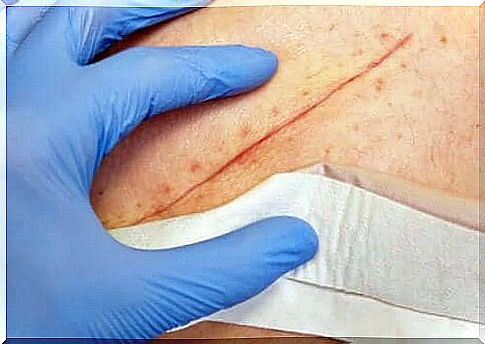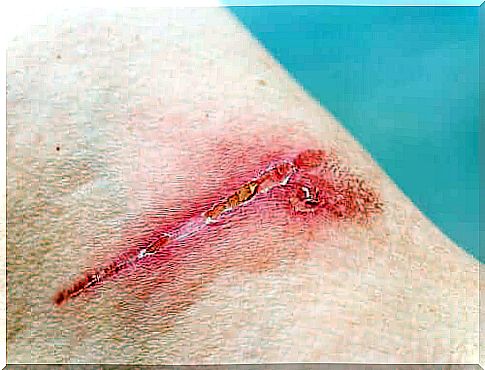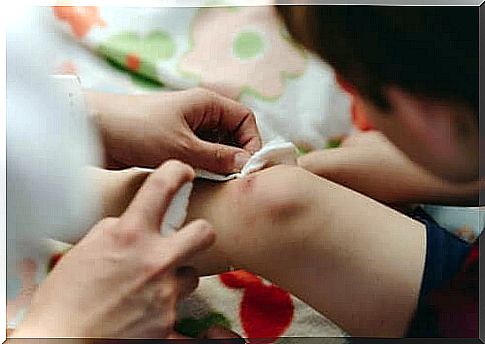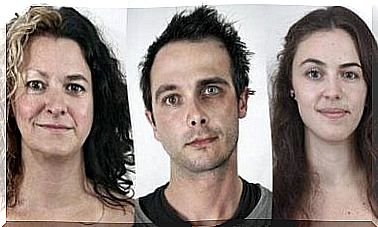Techniques For Treating Large Wounds

As a rule, wounds are injuries that are located on the outside of the body. They can also be defined as a loss of skin continuity due to an external factor. Today we are going to discuss how to treat large wounds.
Depending on the characteristics of the wound, the patient or first aider if present must decide whether he can treat the wound himself or whether the patient should go to the doctor for treatment. In the latter case, the doctor must determine whether he chooses to intervene medically or let the wound heal naturally.
Currently, sutures are one of the most widely used medical techniques for closing large wounds. However, there are numerous variants of this method and the physician must choose the most appropriate treatment for a patient’s wound.
First, let’s take a look at how to classify large wounds to determine how best to treat them. We then discuss the various treatment options.
The classification of major wounds

The first is one of the first things you should always check, the freshness of the wound. Did the wound just start or did the injury take place some time ago?
- On the one hand, most recent injuries are fresh and not inflamed.
- On the other hand, some wounds may be dirtier, have more torn tissue, and are contaminated or contain foreign elements.
Another way to classify a wound is based on the agent or cause of the injury such as:
- stabbings
- accidents
- fire
- etcetera
You can also differentiate wounds based on their appearance or if the wound affects other structures on a part of the skin. However, this is something only doctors and medical personnel can do.
Healing phases of major wounds
Normally, large wounds follow a regeneration or healing pattern that consists of the following phases:
- Reaction phase
- Proliferation phase
- Healing or maturation phase
inflammation
This is also known as the reaction phase. This phase includes the first few days after the injury. In this phase, the blood vessels dilate and the vascular permeability increases. In this way, serous fluid and leukocytes are filtered and a protective layer (a scab) is formed.
Proliferation phase
This is also called the regeneration phase or the granulation phase. It occurs from the third day of the injury and ends 1 to 2 weeks later. In this phase, the body begins to replenish the lost collagen and the lymphatics and blood vessels recover.
Ripening phase
This is sometimes identified as the “remodeling” phase of the wound. This phase starts several weeks after the injury and ends several years later. During this phase, the scar decreases in depth and size.
The extent to which the skin recovers depends on the severity of the injury. The patient’s skin generally retains a lighter color in the area where the injury was located.
How can you stimulate the healing of a large wound?

It is always best to see a doctor in case of a serious and large wound. The doctor will follow the general procedure to treat wounds. In the event of an accident or emergency, a checklist of priorities will always be followed.
First, it must be determined whether the patient may need to undergo anesthesia to reduce the discomfort associated with wound closure.
Depending on the severity of the injury, general or local anesthesia may be administered. To do this, the patient will be injected with one or more medication such as lidocaine.
Then the doctor will gently and carefully remove any foreign objects and debris if they are in the wound. To do this, the most suitable and always sterilized tools will be used.
After that, rinse thoroughly with a saline solution to properly clean the area. After the wound has been sufficiently disinfected, the wound can be closed.
Techniques for closing large wounds
If necessary, the doctor may use bandages, stitches, or staples to bring both sides of the wound back together. Depending on the characteristics of the injury, the corresponding medical team will determine the most appropriate treatment of the wounds.
Plasters like dovetails
This usually consists of a number of special plasters placed as close to the edges of the wound as possible. In general, they will naturally peel off within a few days of placement, especially if they get wet. At that point, the wound should heal far enough so that the edges stay together.
Staples
These are small metal wire pins that hold the edges of the wound tightly together to promote healing and tissue regeneration. They must be removed using a special medical device.
Stitches
There is a wide variety of knots and types of threads that a doctor can use, depending on the tissue and shape of the wound. A needle and special thread is used to suture the entire length of the wound.
Conclusion
It is very important to see the doctor as soon as possible to get the best treatment for large wounds and to ensure proper wound closure and healing.









